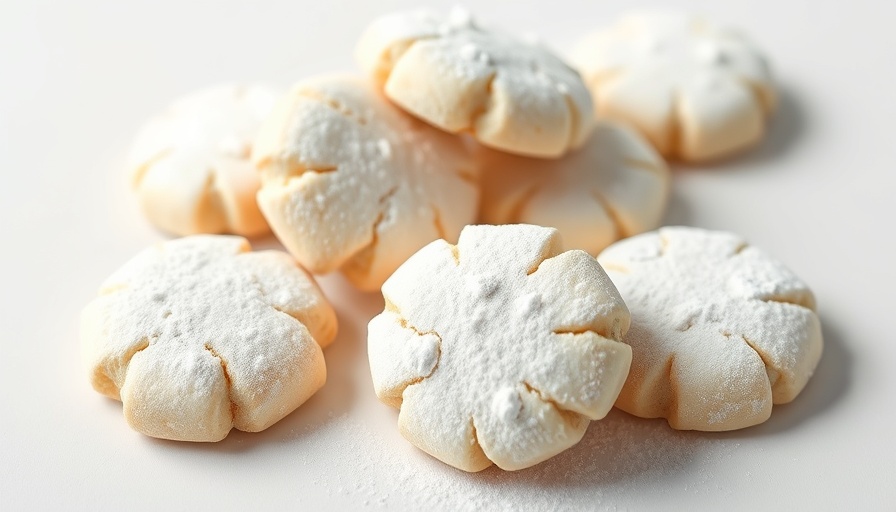
Unlocking the Secrets of Powdered Sugar in Your Kitchen
Whether you're an experienced baker or just someone with a sweet tooth, understanding powdered sugar can elevate your culinary creations. Known under various names like confectioners’ sugar, 10x sugar, and icing sugar, this fine powder is an essential ingredient that can drastically change the texture and appearance of your favorite desserts.
What Makes Powdered Sugar Special?
Powdered sugar isn’t simply granulated sugar ground into a finer consistency. It's a product that, when processed, becomes so delicate that it resembles a fine dust. This ultra-fine texture allows it to dissolve seamlessly into frostings and glazes, making it perfect for achieving that creamy, melt-in-your-mouth experience without any grittiness.
However, there's a twist! To avert clumping, many commercially sold powdered sugars come with an anti-caking agent, often cornstarch, which prevents moisture from causing undesirable lumps. This fine sugar is prized not just for its taste and functionality, but also for its aesthetic appeal as it instantly transforms desserts, lending a pristine finish to cakes and pastries alike.
The Myth: Can You Substitute Powdered Sugar for Granulated Sugar?
Many baking enthusiasts ponder if they can substitute powdered sugar for granulated sugar and vice versa. While they both share a common ingredient, they serve different purposes in recipes. Granulated sugar provides structure and sweetness, while powdered sugar creates a soft, melt-in-your-mouth effect and mixes beautifully into frostings due to its ability to dissolve easily at room temperature.
Make Your Own Powdered Sugar at Home!
Have you ever been in the middle of a recipe and realized you're out of powdered sugar? Fear not! With just a few basic ingredients and tools, you can make your own at home. Chef David Guas from Bayou Bakery emphasizes that the process is both simple and efficient.
Here’s how to do it: blend one cup of granulated sugar with one tablespoon of cornstarch in a high-powered blender, like a Vitamix or Ninja. Alternatively, if you need a smaller quantity, use a coffee or spice grinder instead. The cornstarch is optional, but it helps to prevent clumping in the final product, providing a smoother texture for your glazes and frostings.
Why This Matters: The Role of Sugar in Our Diet
As we explore ingredients like powdered sugar, it’s essential to acknowledge their place in our diets and the broader health conversation. Sugar, while often misunderstood, can play a part in balanced enjoyment of foods. It’s vital to use it in moderation and be mindful of how much we incorporate in our cooking and baking.
Embracing Culinary Creativity
The art of cooking is not only about following recipes but also about creativity and enjoyment. Understanding ingredients like powdered sugar opens up new avenues for innovation in the kitchen. So next time you whip up a dessert or bake special treats for the family, remember these insights, and let your creativity soar!
In conclusion, whether you decide to buy powdered sugar from the store or whip up a batch yourself, it’s crucial to appreciate why this ingredient is more than just sugar—it's a key player in the world of baking. Think about the last time you indulged in a sweet treat. Each sprinkle of powdered sugar doesn’t just serve a purpose; it adds joy to the experience.
Ready to dive deeper into the sweet realm of baking? Start experimenting today, and let your culinary adventures begin!
 Add Row
Add Row  Add
Add 




Write A Comment